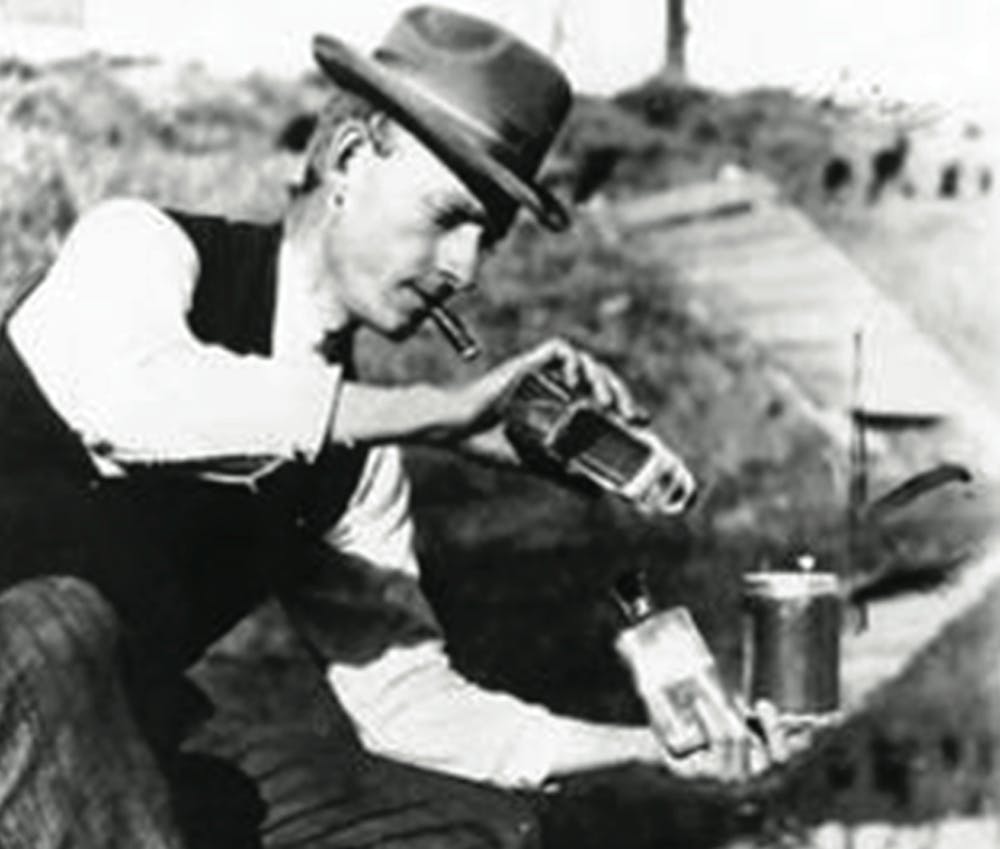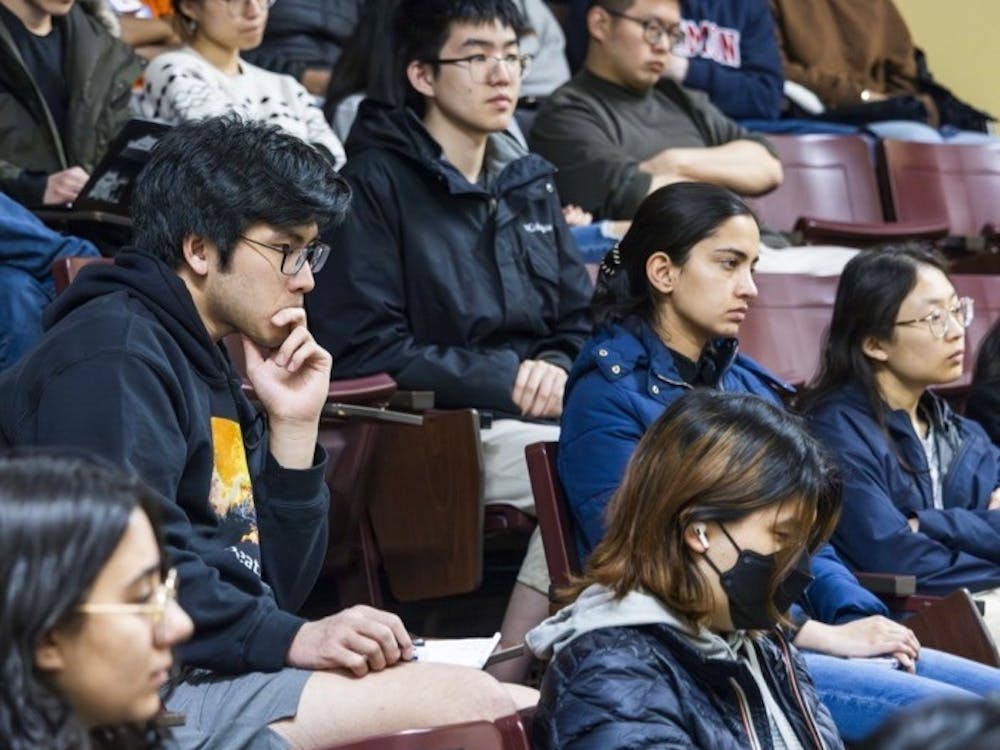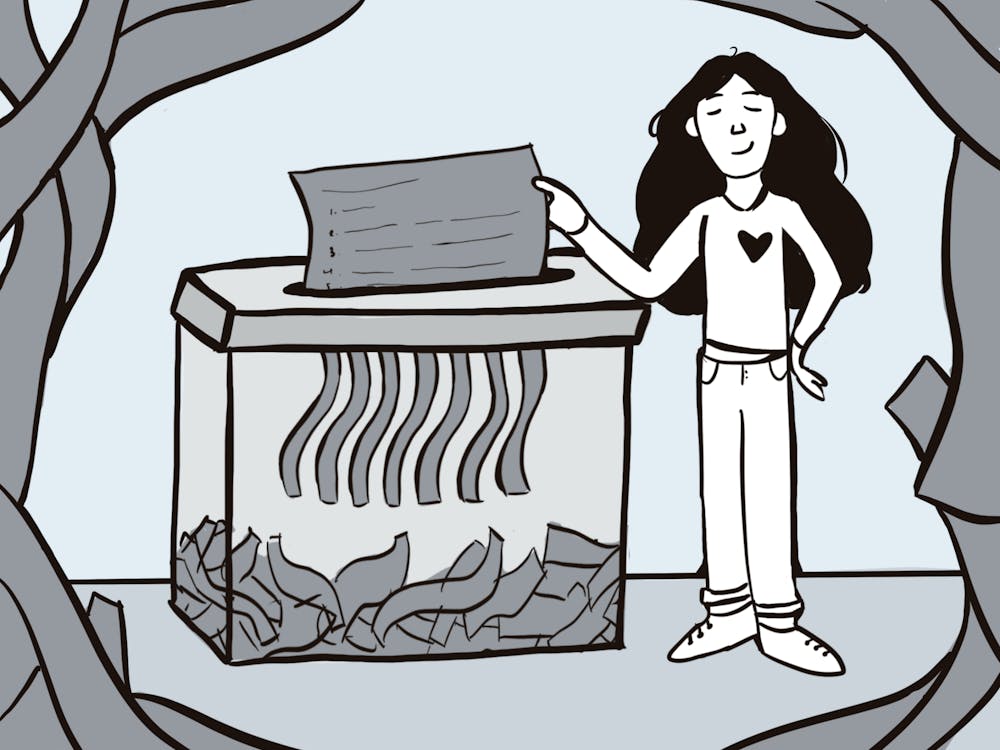Starting out as a sewing machine salesman in the early 1900s, Charles Hatfield would wander through the dry, godless wasteland known as Southern California. There, he would preach to farmers, small towns and city councils that he could bring salvation and that he could baptize the dirt of the earth with his “moisture accelerating recipe.”
And here it is, yanked from the annals of history:
Materials
- Tower
- Secret batch of 23-ish chemicals
- Suit
- Money for train/bus ticket
Methods
1. Build a big tower a couple of stories high in an empty field or something like that.
2. Mix your batch of 23-ish secret chemicals.
3. Put on a suit.
4. Climb up the tower (see step 1) while wearing your suit (see step 3) and put the batch of chemicals (see step 2) in a giant evaporating tank which you should’ve put on top of a tower.
5. Buy some train or bus tickets in case you need to leave town in a hurry.
6. Make it rain both literally and figuratively.
And it rained... Most of the time. Whether it was all by coincidence or because the fact that Hatfield wore a suit is unknown. People believed in his ability to make rain, and he would correct them and say “accelerate moisture.”
In 1915, the San Diego City Council needed water so they asked Hatfield to fill the Morena Reservoir. After some business negotiation, it was verbally decided that Hatfield would receive $10,000 dollars once the reservoir was filled.
So Hatfield got out his suit and his 23ish chemicals and his tower and his bus ticket. He set everything up according to his recipe and then he and the rest of San Diego waited for the rain. And it did indeed begin to rain. And rain. And rain. Bridges were destroyed. Homes and farms flooded; an estimated 20 people died; damages were estimated to be $3.5 million. It was a lot of rain.
The rain filled up the reservoir (and a whole lot more), and Hatfield wanted to get paid for providing his blessed service to the people of San Diego. But the San Diego City Council also wanted to be paid for all the damages made by Hatfield’s rain.
Following American tradition, he sued them and they sued him. In the end, the courts ruled that the rain was “an act of God” so Hatfield was not to be paid and will not have to pay and God did not have to pay because God is outside of the jurisdiction of the U.S. court system.
Hatfield continued this business of bringing rain to the desperate and the gullible until he was stopped by a force greater than weather: The U.S. economy. The Depression had hit and people no longer had the means to pay for the services of a man who claimed to bring water from the sky.
Hatfield went back to being a sewing machine salesman and died in 1958 with his recipe for rain still a secret.
What was in that recipe? Making freshwater to fall from the sky can fix a lot of problems nowadays (ex. making Southern California hospitable to life or increasing the amount of arable farmland in third world countries).
According to the book, The Rainmakers by Clark Spence, one news editor reporting on Hatfield wrote that the chemicals smelled like “a limburger cheese factory has broken loose... These gases smell so bad that it rains in self-defense.”
Seems legit.
























Please note All comments are eligible for publication in The News-Letter.